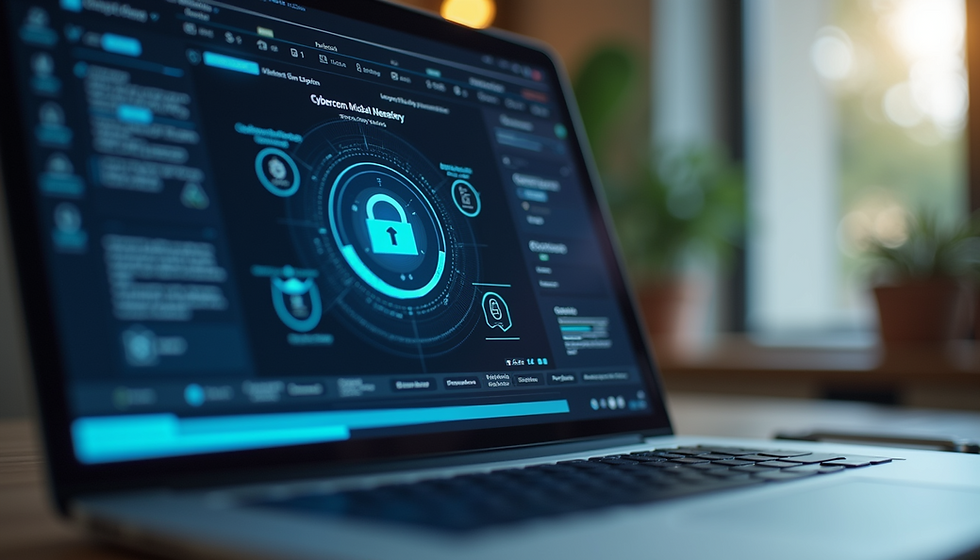Identifying Phishing Emails: A Comprehensive Guide for Small Businesses to Protect Against Spam
- John W. Harmon, PhD

- Aug 11
- 4 min read
In today's online world, small businesses face a growing threat from phishing attacks. These fake emails are created to trick recipients into giving away personal information, such as passwords or credit card details. The good news is that you can protect your business by learning how to spot these harmful emails. This guide is filled with practical tips and real-life examples to help keep your business safe.
Understanding Phishing Emails
Phishing emails often pretend to be from trusted sources like banks or colleagues. They might contain urgent messages that push the recipient to click on links or download attachments. For example, in a recent study, 45% of small businesses reported being targeted by phishing emails, highlighting the importance of knowing how to recognize these threats.
Spotting the signs of phishing emails is the first line of defense for protecting your business’s sensitive information.
Common Signs of Phishing Emails

1. Suspicious Sender Email Address
One of the easiest ways to identify a phishing email is by checking the sender's email address. Often, scammers use addresses that mimic real ones but include small changes. For example, instead of `info@bank.com`, you might see `info@banK.com` or `info@banksecure.com`. Always double-check the sender's email before taking any action.
2. Generic Greetings
Phishing emails tend to use generic greetings such as "Dear Customer" or "Dear User" instead of your name. A legitimate company often personalizes its emails. If you receive an email that lacks this personal touch, be cautious.
3. Urgent or Threatening Language
Many phishing emails use scare tactics to create a false sense of urgency. Phrases like "Your account will be closed within 24 hours" or "Immediate action required" are red flags. For instance, a phishing email may claim that you must verify account information or risk being locked out. Take a moment to think before reacting to such messages, as acting on impulse can lead to mistakes.
4. Unusual Requests for Personal Information
Reputable organizations seldom request sensitive information via email. If you get an email asking for details like your password or social security number, it is most likely a phishing attempt. Always use official websites or phone numbers to provide any sensitive information.
5. Poor Grammar and Spelling
Many phishing emails come from non-native English speakers, leading to noticeable grammar and spelling mistakes. A report found that about 60% of phishing emails contained such errors. Be wary of emails that seem unprofessional or poorly written, as they often signify a scam.
How to Spot Phishing Links
1. Hover Over Links
Before clicking any link in an email, hover your mouse over it to reveal the actual URL. Scammers often disguise malicious links. For instance, a link that seems to go to your bank could lead to a fraudulent site instead. Always verify where a link will send you before clicking.
2. Look for HTTPS
Reputable websites use HTTPS, which indicates a secure connection. If a link takes you to a page without HTTPS, it may signal a phishing attempt. In fact, studies show that nearly 80% of phishing sites do not use HTTPS. Always check the URL before entering any personal information.
The Role of Attachments
1. Be Wary of Unexpected Attachments
Phishing emails might include attachments that contain malware. If you get an attachment you weren't expecting, especially from someone you don't know, do not open it. Instead, use antivirus software to scan attachments before taking any action.
2. File Types to Avoid
Certain file extensions, such as .exe, .scr, or .zip, are often used in phishing attacks. A report indicated that email attachments accounted for over 30% of malware incidents. Be cautious about opening files unless you trust the sender.
Educating Your Team
1. Conduct Regular Training
Regular training sessions are vital for helping your employees recognize phishing threats. For example, a business that held monthly training sessions reported a 50% decrease in phishing incidents within a year. Consider conducting simulated phishing exercises to enhance your team's skills.
2. Encourage Reporting
Create a work environment where employees feel comfortable reporting suspicious emails. Set up a clear process for reporting potential phishing cases and ensure your team knows how to escalate concerns. Prompt reporting can help minimize risks and protect your business.
Staying Safe in the Digital World
Recognizing phishing emails is crucial for small businesses striving to protect against cyber threats. By familiarizing yourself with common indicators of phishing attempts and providing ongoing education for your team, you can significantly lower the chances of becoming a victim.
Stay vigilant, and make cybersecurity a priority in your business practices. When in doubt, take a moment to verify information rather than reacting quickly.
By following the strategies outlined in this guide, you can better equip your business to navigate the challenges of the digital landscape and enhance your defenses against phishing attacks.
📅 Book your time here to discuss protection for your business:
You can also check your security standing anytime with CyberScore:




Comments